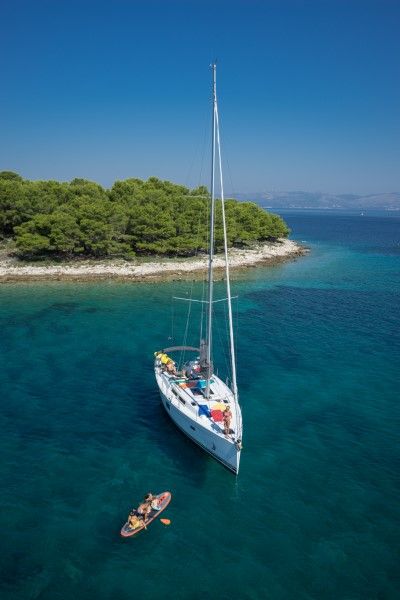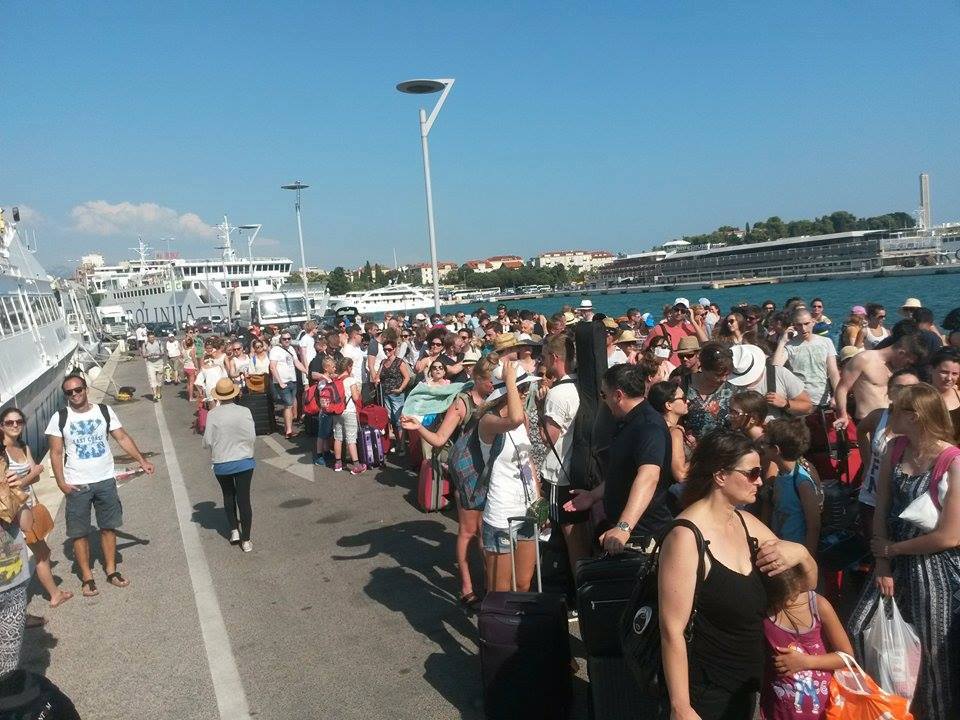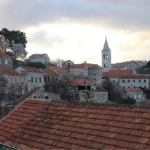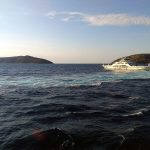In this instalment of the alphabet series – horribly overdue – we’re looking at the best the Adriatic has to offer, starting with the letter C
Without further ado:
Croatian coast
Just kidding.
Cres
I’m more than aware I’m headed for a ban on Cres after all the recent pieces, so I’ll use this opportunity to give some love to my favourite island one last time. (As if.) Cres is one of Kvarner’s island gems, nestled between Krk and Lošinj, somehow getting less tourist traction than the other two. And yet, it has a special unpretentious charm, a laid-back atmosphere that welcomes every visitor with open arms. Be it Osor, the town of music; Lubenice, a tiny village built on top of a striking cliff, or any other quiet oasis on the island, the many faces of Cres are sure to stop you dead in your tracks. Why even bother with island hopping? Stay for a while. As Cres is widely known for its sheep casually nibbling on herbs on the side of the road, you might even make a friend or two along the way.
Croatia Yachting
Croatia Yachting Charter agency was established in 2003 and has since become one of the leading Charter Brokers and Yacht Charter companies in Croatia; this was further recognised this year when they were awarded the “Best Yacht Charter Company in Croatia” at the ‘Days of Croatian Tourism’ Awards.
Croatia Yachting have bases in the leading destinations on the Adriatic for nautical tourism: Kaštela, Dubrovnik and Biograd na Moru. Together with their partners, they have more than 400 exceptional sailing yachts in their fleet; and, as the authorised Hanse dealer of Croatia, they have the biggest Hanse Yachts charter fleet in the world.
Total Croatia Sailing took to the water with Croatia Yachting this year when we chartered the Hanse 455, you can read about our full experience here or get a taste of the experience in our video below.
Croatia Yachting has also made yacht ownership much easier and accessible through their Yacht Management programme, read more about bringing your yacht ownership dreams to reality here.

Credit: Croatia Yachting
Carnival
Two locations, two very distinctive festivals. The carnival in Rijeka is the biggest one of its kind in Croatia; it takes place each year before Lent, anytime between the end of January and the beginning of March. Festivities officially start with a symbolic ceremony that has the mayor handing over the keys to the city to the Carnival Master; what follows are multiple weeks of numerous opulent parties scattered all over the wider Rijeka area. The crown jewel of the carnival month is the International Carnival Parade, with thousands of masked participants from all over the world taking a stroll along the main promenade in the city. Even though the parade wasn’t established until 1987, the custom dates further back in history, to a time when the locals donned costumes and insane animal masks in order to scare away malevolent spirits. The tradition lives on in the form of zvončari (the bellmen), groups of masked men clad in beastly masks and carrying gigantic bells tied around their waist. They make a regular appearance as the closing act of each annual parade: a bit of enthusiasm, a generous amount of wine to help them brave the cold in their short-sleeved costumes, and ding dong, the ghosts don’t stand a chance.
Equally colourful, the carnival on Lastovo island is a beloved event with an interesting origin story. When a pirate fleet threatened the island, the residents of Lastovo promptly ditched the option of surrender, grabbed their weapons and prepared for a fight. As a bit of help from a higher power never hurt anybody, the women and children hurried to the local church of St. George to pray – and out of nowhere, a storm descended on Lastovo, crushing down the pirate ships and leaving the locals unharmed. Rejoice! People of Lastovo remember the occasion with their annual carnival that takes place a day before Ash Wednesday. The most popular part of the festivities is the Poklad puppet being sent down a 300-metre zip line, no less than three times in a row. Add some fireworks and a cheerful crowd, and you have yourself a pretty memorable event. Who said islands are only lively during summer?
Cento in bocca
One of my favourite gastro memories dating into early childhood is being presented with a large plate, filled to the brim with tiny fried fish. In most cases, the dish is made from picarel and sprat (girice and papaline in Croatian) or other similar species – the smaller, the better. Think of it as the runt of the collective litter, hundreds of specimen considered too minuscule to be sold together with their normal-sized siblings for the same price. The tiniest bubs are thrown together, dusted with flour and fried, and voila – a fulfilling plate waiting for you to dive in. In these parts, we use the Italian term ‘cento in bocca’; translating to ‘a hundred in your mouth’, the name is a reference to their size that enables you to greedily stuff yourself with fish without stopping to de-bone them first. Thin and silky like strands of hair, the bones won’t present an obstacle anyway. Even though the quantity might look monstrous, you’ll work your way to the bottom of the plate in no time.
Finding a photo of a proper cento in bocca plate is next to impossible; think something along these lines.
Cirrus and cumulonimbus
The cloud portfolio offers multiple items for our list. Cirrus clouds are a type of atmospheric clouds recognisable for their distinctive shape: the wispy lines resemble thins strands of hair, providing the cloud with its name that originates from the Latin word cirrus, literally translating to lock of hair. Look up, and you might get an impression someone ran a comb through a parcel of the cloudy sky. In these parts, cirrus clouds present no particular reason to worry, as they are usually quick to disperse. On occasion, they might announce an upcoming change of weather – in those cases, they are blown off an advil cloud, marking a possible arrival of heavy rainfall down the line.

Cirrus clouds
On the other hand, its distant relative cumulonimbus can be considered an omen. A dense towering vertical cloud, cumulonimbus is associated with thunderstorms and can produce lightning and tornadoes. If you were planning to sail out and you see a cumulonimbus in the distance, it’s best to remain docked and change your plans for the day. They are often accompanied by acessory clouds such as shelf clouds; we’ve seen more than one of those this summer – remember this majestic beast on Lošinj island?
Concessions
Oh boy, has this been the trending word of the summer or what? The recently adopted Law on Concessions triggered an avalanche of concession holders becoming a bit too arrogant in their beach management ways. Even though the law still states that every single metre of the coast is considered maritime property – and as such, is strictly public in nature – concessionaires started usurping more and more space with their beach bars, lounge chairs and every imaginable type of rentable equipment. That could have been forgiven to a certain extent, if some of them didn’t get too cocky and decided to turn people away if they were unwilling to pay an entrance fee to the beach. Random charges, access roads blocked for locals… Issues started piling on, and the public didn’t take it lightly – citizens have been reporting individual cases to the local authorities and posting about the burning problem on social media throughout the summer.
Catamaran

A catamaran, as you all probably know, is a vessel featuring two parallel hulls of equal size, varying from smaller sailing boats to large passenger ships. They have a continuous tradition of more than 3000 years, as the first catamaran-type vessels were created by the Polynesian peoples back in 1500 BC. The modern catamaran developed from the primitive prototype of two canoes bound together by a wooden frame, only becoming popular in the western world in the 19th century. Thanks, Wikipedia!
Anyway, if you spent some time on the coast this summer, it’s likely you have taken a catamaran at a certain point; it might have been a Jadrolinija line featuring one of the larger ships, or you might have chartered a smaller sailing catamaran from one of the privately owned nautical companies. The second option is one of the best ways to explore the Adriatic properly; look at Croatian companies such as Nava Boats if you want to get the best possible service and support a local business. The expert crew at Nava will take care of every step of your Adriatic adventure, and in case you end up getting hooked on sailing and thinking about buying a ‘cat’ of your own, they can help out with that as well.
Speaking of… However practical it might seem, watch out for the context when using that ‘cat’ nickname. I upset more than one person this summer by reporting about cats getting set ablaze.










